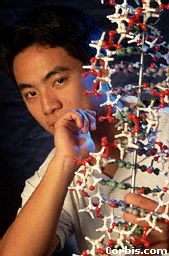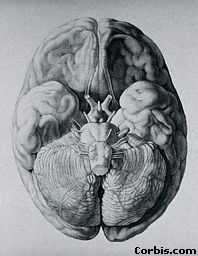|
PART 4: GENES,
ALTRUISM, AND EVOLUTION |
|||
|
you learn that nature neither gives nor expects mercy. But human beings really do hold ourselves accountable
in a way that other animals don't. |
|||
|
Section 4: The “feel good” organizational structure of the brain |
|||
| In the Selfish Gene the notion of “suicidal altruism” in which one dies to save another is definitely a problem to Darwinian conception of reproduction. Hawkins writes | |||
| "A
gene for suicidally saving five cousins would not become more numerous
in the population, but a gene for saving five brothers or ten first
cousins would. The minimum requirement for a suicidal altruistic gene
to be successful is that it should save more than two siblings (or children
or parents), or more than four half-siblings (or uncles, aunts, nephews,
nieces, grandparents, grandchildren) or more than eight first cousins,
etc." |
|||
| There is
no cost beneficial calculation that explains such behaviors. There must
be something in ourselves that precedes conscious cost-analysis reason,
which makes some people jump in to save another. I am not saying that
this is the case with all people. In fact,
from now on I want to let go of the concept of universality of anything
(I will expand my reasons for this in
Part 5
)…what I am saying is that we can come up with enough observations
to say that behaviors such as altruistic suicide in humans can not
be sufficiently grasped through selfish motives. So what is that something
within us? In previous parts,
I already alluded to the influence of brain structure and genes on
behavior. Thus, so far we can say that |
|||
|
|||
|
|
|||
| However, we can not say nothing about the question of why it makes us feel good, unless we undertake the task of finding the mechanism of both the biological evolutionary reasons as well as cultural components which caused the changes in the brain. However on a more immediate level we can infer that : | |||
|
|||
|
The thing
about this structure that is fascinating is its ability to
transcend itself. In the next part I will explore this transcending
phenomenon of the human brain in context of something we are all are
familiar with – the fascinating world of dreams. I hope that after studding
this “system” we can get a more complete picture about the organizational
structure of the brain I alluded to above. |
|||

